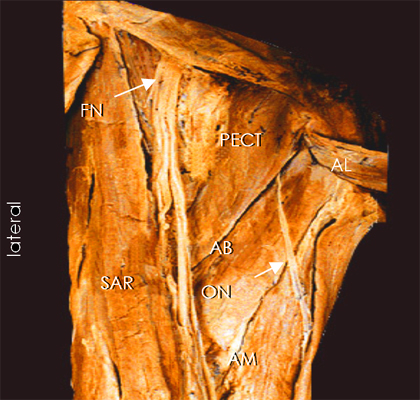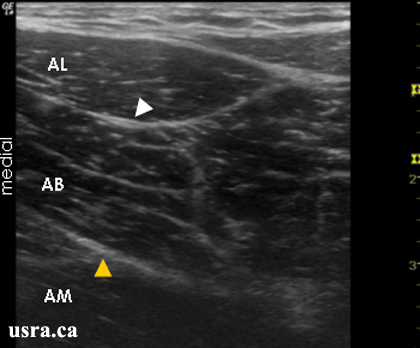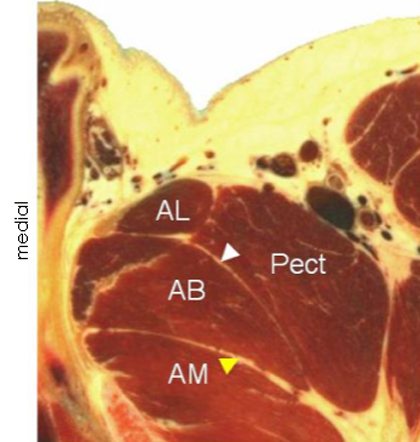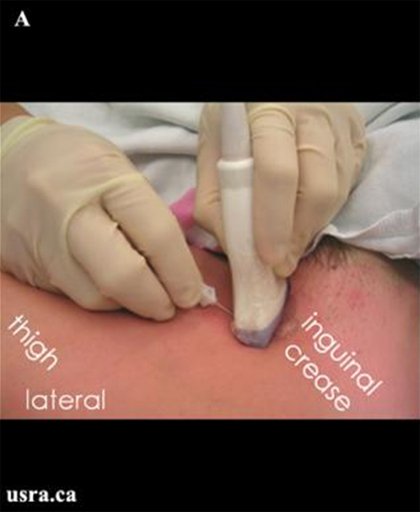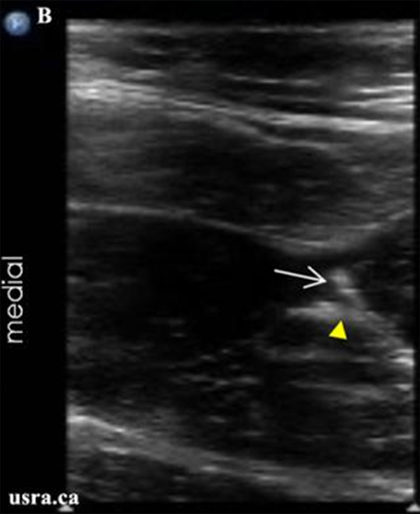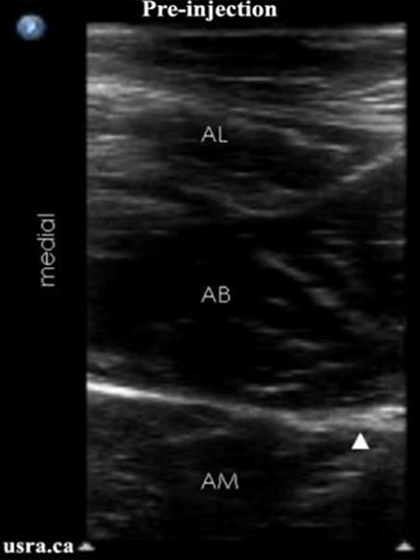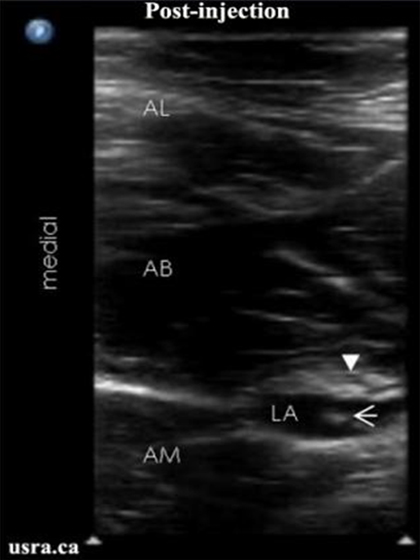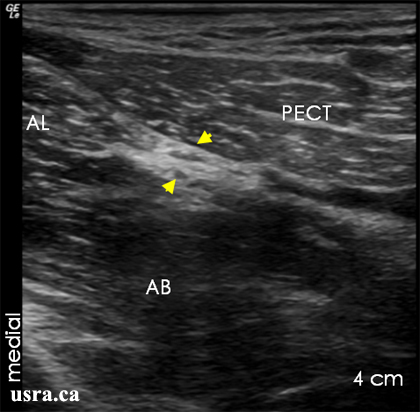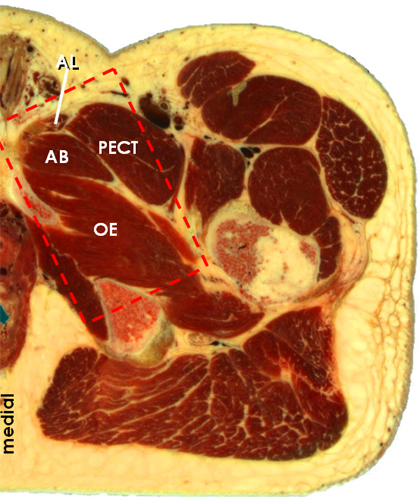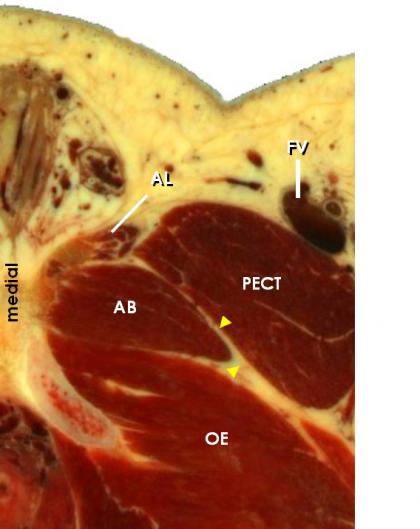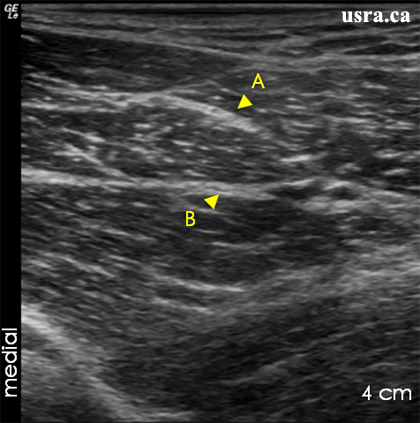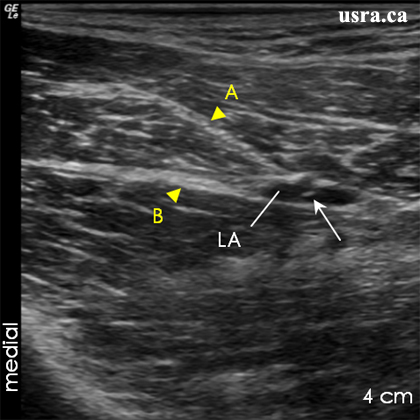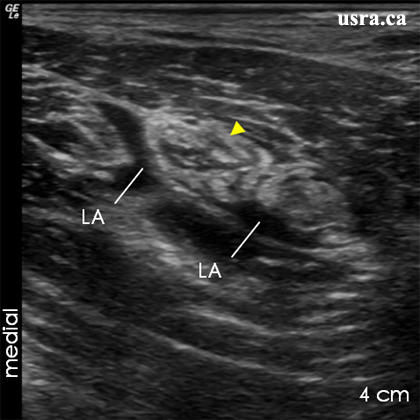Scanning Technique
- Position the patient supine with the leg to be blocked slightly externally rotated.
- Expose the groin and the medial aspect of the proximal thigh.
- After skin and transducer preparation, place a linear transducer with the appropriate frequency range (10-12 MHz) in the inguinal crease and scan slightly distally in the upper medial thigh.
- Optimize machine imaging capability; select appropriate depth of field (usually within 2-4 cm), focus range and gain.
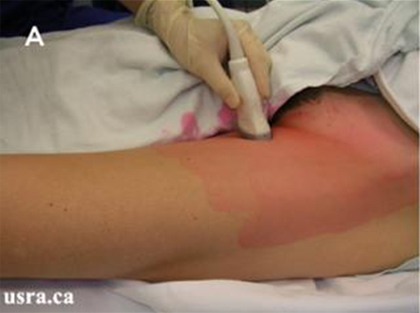
|
Figure A. A high frequency linear transducer is placed on the medial side of the left thigh below the inguinal crease. |
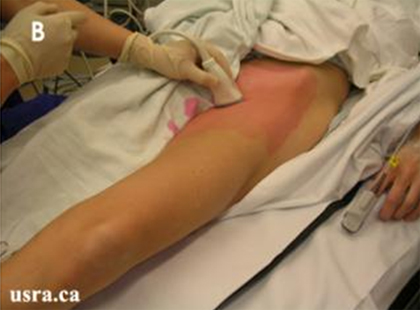
|
Figure B. Note the left leg is slightly externally rotated. |

